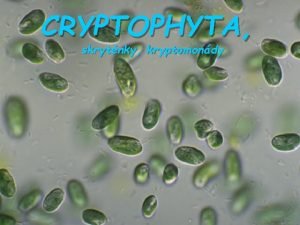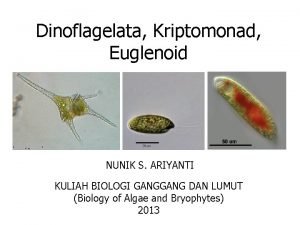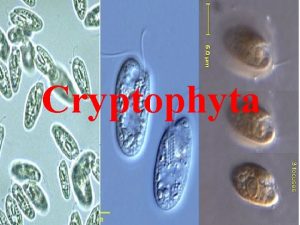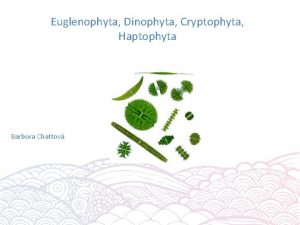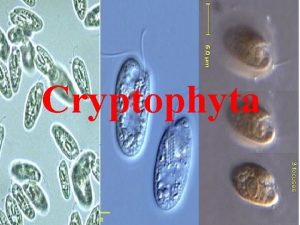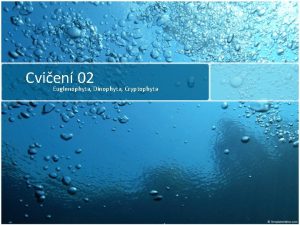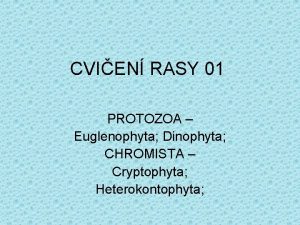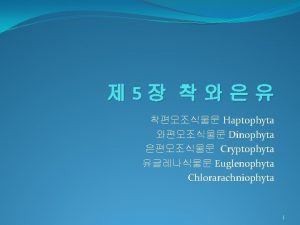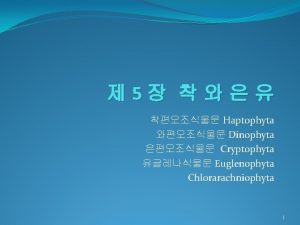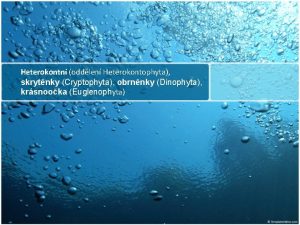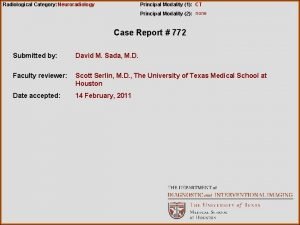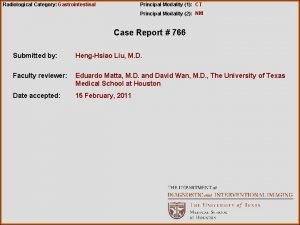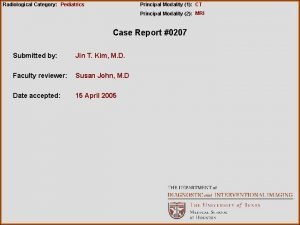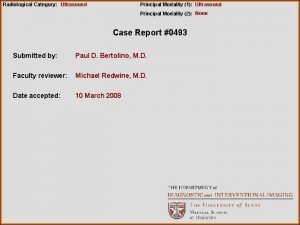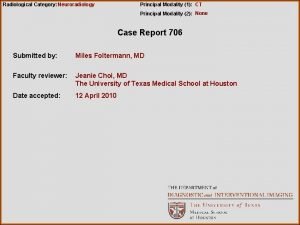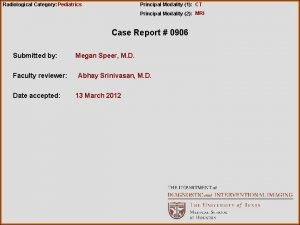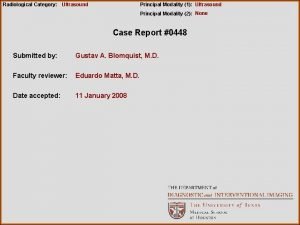Cryptophyta Cryptophyta The principal Characteristics of the Cryptophyta























- Slides: 23

Cryptophyta

Cryptophyta The principal Characteristics of the Cryptophyta 1 - Relatively each small cell is around 10– 50 μm in size and flattened in shape, Typically phytoplankton with an anterior groove or pocket. At the edge of the pocket there are typically two slightly unequal flagella. 2 - One or two chloroplasts include chlorophylls a and c 2, as well as phycocyanin and phycoerithrin related to but different from phycobilins found in Cyanobacteria, and Rhodophyceae), and yellow pigments (α-carotene and xanthophylls. 3 - Storage food Both Starch grains, and lipids. 4 - Eyespot, if present, is inside plastid.

5 - Reproduction is generally Asexual by longitudinal cell division. 6 - Lack cell walls-naked , Cell Covering: Periplast—made up of protein plates. 7 -Nutrition is autotrophic or heterotrophic. 8 -Flagellate: I. Two unequal flagella Typically the longer flagellum has two rows of mastigonemes, the shorter one a single row. mastigonemes, assist in locomotion by increasing the surface area of a flagellum. 9 - They are common in freshwater, and also occur in marine and brackish habitats.


Cryptophyta Class: Cryptophyceae 1 - Order: Cryptomonales Geuns: Cryptomonas 2 -Order: Cryptococcales Genus: Tetragonduim Cryptomonas sp.

1 - A typical photosynthetic genus, has two unequal flagellaattached at one end of a flattened oval cell. that inhabit freshwater aquatic systems. Cryptomonas 2 - Cells varying in shape between ovoid and elliptical, averaging 40 μm in size. 3 - Most have two chlorplasts, the color of which is usually yellowish to olive-green, but this may be red during winter months. 4 - Cell division is longitudinal. 5 - Cryptomonas can be either protozoa (order Cryptomonadida) or alga (class Cryptophyceae). 6 - Cryptomonas phytoplankton function as primary producers in freshwater ecosystems and contribute to the foraging base of many heterotrophs, including macroinvertibrates and fishes.




Pyrrophyta (dinoflagellata)

Pyrrophyta (dinoflagellata) The principal Characteristics of the Pyrrophyta. 1 - microscopic , unicellular organisms. 2 -The name "dinoflagellate" refers to the forward- spiraling swimming motion of these organisms. 3 -Transverse and longitudinal flagella ; -transverse flagellum is flat and encircles the body. -Longitudinal flagellum is perpendicular to the transverse and is responsible for swimming. - Beating flagellum produce a forward , spiraling motion.

A representation of thecal plates on a typical armored dinoflagellate. Image by A. Mac. Rae Univ. Calgary, after Evitt (1985).

4 -photosynthetic species possess green pigments, chlorophylls a and c, and golden brown pigments, including peridinin. 5 -Dinoflagellates primarily exhibit Asexual cell division, some species reproduce Sexually. 6 -Their nutrition varies from Autotrophy (photosynthesis; innearly 50% of the known species) to Heterotrophy (absorption of organic matter) to Mixotrophy (autotrophic cells engulf other organisms, including other dinoflagellates). 7 -Storage food Both starch grains, and lipids.

8 -Dinoflagellates exhibit a wide variety in morphology and size (from 0. 01 to 2. 0 mm). They commonly have a cell covering structure (theca) that differentiates them from other algal groups. 9 -. Cells are either armored or unarmored. Armored species have thecae divided into plates composed of cellulose or polysaccharides which are key features used in their identification. The cell covering of unarmored species is comprised of a membrane complex. The theca can be smooth and simple or laced with spines, pores and/or grooves and can be highly ornamented. 10 - Most dinoflagellates have dinokaryon nucleus in which the chromosomes are attached to the nuclear membrane. These lack histones and remain condensed throughout inter phase rather than just during mitosis. The nuclear envelope does not break down during mitosis, which is thus termed closed mitosis. The mitotic spindle is extranuclear


11 - Dinoflagellates. known for producing toxins when in large numbers -Refered to as Red tides -Toxins affect both marine life and humans.

Pyrrophyta includes two class; 1 -class: Desmophyceae 2 -class; Dinophyceae The main characteristics of Dinophyceae are: • The algae coming under this class is known as dark yellow to brown algae. • They are commonly known as sea water planktons. • They are free living, symbiotic or parasitic organisms. • The reserve food materials are starch and oil. • They possess characteristic nucleus which is condensed and banded chromosomes. called dinokaryotic (dinokaryon) • The motile phases possess two dissimilar flagella.

Gymnodinium, genus of marine or freshwater dinoflagellates. Members of the genus are bilaterally symmetrical with a delicate pellicle (or envelope) and disk-shaped chromatophores, which, when present, contain yellow, brown, green, or blue pigments. The genus is claimed by both botanists and zoologists, for, like all dinoflagellates, it has both plant-like and animal-like species. Some species are photosynthetic; others require solid food. Some may be bioluminescent or form periodic blooms that may colour water yellow or red. A few species produce a toxin similar to that of the dinoflagellate Gonyaulax; both toxins are fatal to fish and can irritate the nose and throat of human.

Bioluminescent

Gymnodinium genus of marine or freshwater dinoflagellates. Members of the genus are bilaterally symmetrical with a delicate pellicle (or envelope) and disk-shaped chromatophores, which, when present, contain yellow, brown, green, or blue pigments.

Ceratium species are easily identifiable because of their unique shape. They are covered with an armor-like cell wall, made out of polysaccharidel. The most distinguishing characteristic are the arms (also known as horns), the shape and size of which vary from species to species. Ceratium monoceras has a single, apical horn. The arms help Ceratium float, but prevent them from moving very quickly. Another important feature is that they contain small plasmids.

Ceratium have two flagella. These wind around the cell body. The flagella each have different movements and shapes. The transverse flagellum beats in a spiral motion, while the longitudinal flagellum pulses in waves. . Certain species are bioluminescent. Under adverse conditions, Ceratium are able to Encyst themselves as a form of protection. Ceratium are mixotrophs, obtaining food both through photosyntheis and phagocytosis. Asexual reproduction is most common in Ceratium. However, sexual reproduction is also possible, usually taking place under adverse conditions.

Harmful algal blooms Dinoflagellates sometimes bloom in concentrations of more than a million cells per millilitre. Under such circumstances they can produce toxins (generally called dinotoxins) in quantities capable of killing fish and accumulating in filter feeders such as shellfish, which in turn may be passed on to people who eat them. This phenomenon is called a red tide, from the color the bloom imparts to the water.
 Crytophyta
Crytophyta Contoh cryptophyta
Contoh cryptophyta Pyrrophyta
Pyrrophyta Cryptophyta
Cryptophyta Hình ảnh bộ gõ cơ thể búng tay
Hình ảnh bộ gõ cơ thể búng tay Lp html
Lp html Bổ thể
Bổ thể Tỉ lệ cơ thể trẻ em
Tỉ lệ cơ thể trẻ em Voi kéo gỗ như thế nào
Voi kéo gỗ như thế nào Glasgow thang điểm
Glasgow thang điểm Chúa yêu trần thế alleluia
Chúa yêu trần thế alleluia Các môn thể thao bắt đầu bằng tiếng bóng
Các môn thể thao bắt đầu bằng tiếng bóng Thế nào là hệ số cao nhất
Thế nào là hệ số cao nhất Các châu lục và đại dương trên thế giới
Các châu lục và đại dương trên thế giới Công thức tính độ biến thiên đông lượng
Công thức tính độ biến thiên đông lượng Trời xanh đây là của chúng ta thể thơ
Trời xanh đây là của chúng ta thể thơ Mật thư tọa độ 5x5
Mật thư tọa độ 5x5 101012 bằng
101012 bằng Phản ứng thế ankan
Phản ứng thế ankan Các châu lục và đại dương trên thế giới
Các châu lục và đại dương trên thế giới Thể thơ truyền thống
Thể thơ truyền thống Quá trình desamine hóa có thể tạo ra
Quá trình desamine hóa có thể tạo ra Một số thể thơ truyền thống
Một số thể thơ truyền thống Cái miệng xinh xinh thế chỉ nói điều hay thôi
Cái miệng xinh xinh thế chỉ nói điều hay thôi
